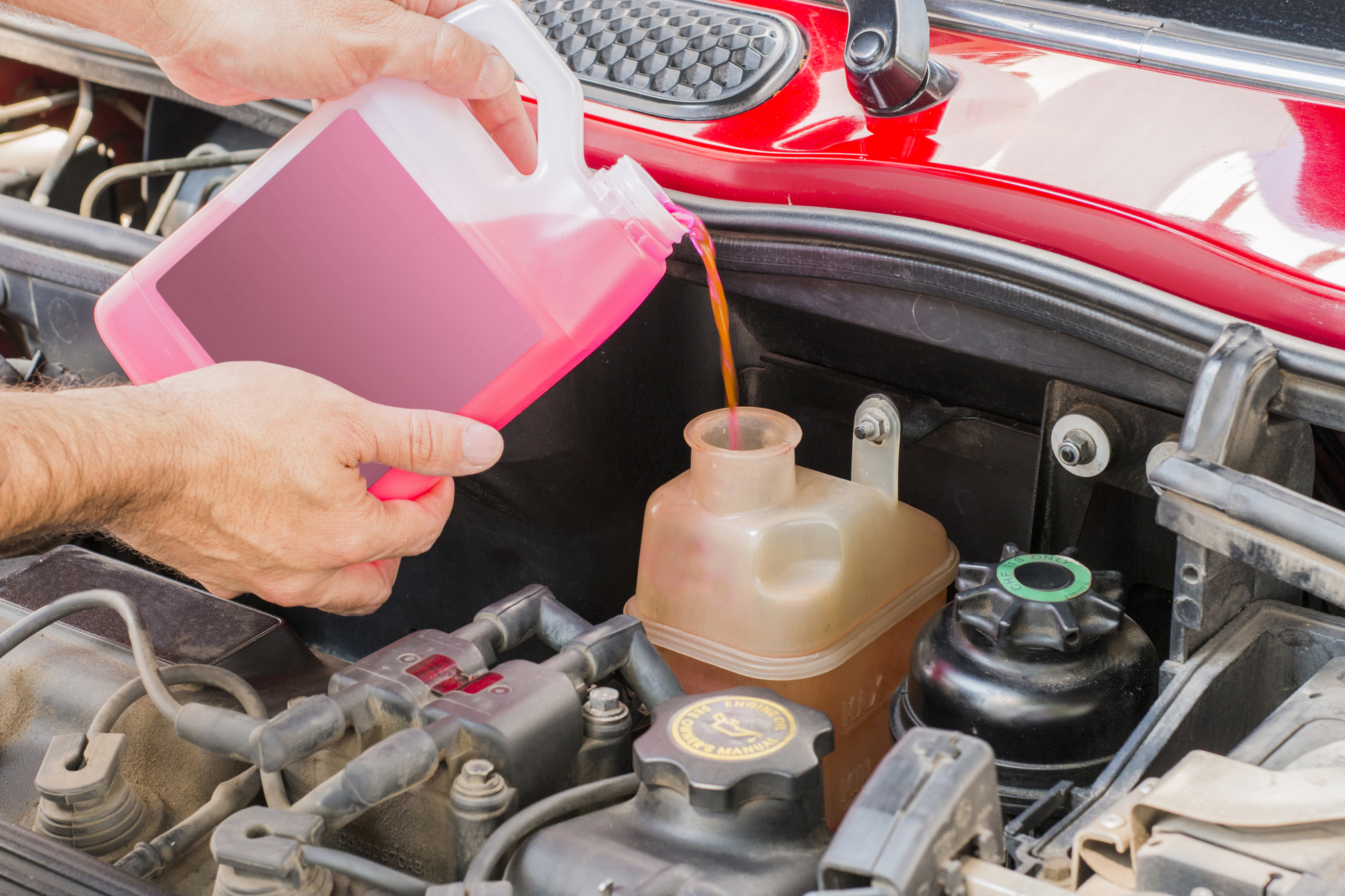Most car owners don’t give coolant a second thought, let alone worry about what happens if the wrong coolant is used. It’s just another fluid level to have checked out when they have the car serviced, or they may top it off themselves. The fact is that engine coolant performs three essential tasks:
- Protects the cooling system and engine from rust and corrosion.
- During the winter months, it lowers the freezing point of the cooling system.
- During the hot summer months, it raises the boiling point of the cooling system.
If your vehicle’s cooling system isn’t topped off or refilled with the right coolant, costly problems could occur.
Why it’s Important to Have the Right Coolant
In older vehicles, cooling systems are generally made up of brass, cast iron, and rubber parts, so coolant systems back then were basically the same. Today’s cooling systems use components manufactured from copper, nylon, silicone, steel, aluminum, and magnesium alloys. The kind of coolant required can differ by year, make, model, engine, and the country where the vehicle was manufactured. Considering the varying factors that come into play, car owners need to know which kind of coolant is appropriate for their vehicle.
What Happens if You Use the Wrong Coolant?
Using the wrong coolant or mixing different types together can hinder the car’s performance. It may also increase corrosion in the radiator. It’s important to note that the type of coolant you should use can’t accurately be identified by color. Using the wrong coolant can lead to corrosion and other damages to the radiator, water pump, radiator hoses, cylinder gasket, and more. The best way to ensure you get the correct coolant is to have your vehicle maintenance performed by a professional auto technician.
What are the Different Types of Engine Coolant?
Many modern vehicles require enhanced engine coolants to maintain their cooling systems and protect the engine. Today, vehicle service providers use three following types of coolant:
IAT
For years, this green-hued coolant (IAT – Inorganic Additive Technology) protected cooling systems. However, it’s rarely used as a factory fill in modern vehicles. One reason for this is the fast depletion speed of its additives, meaning it must be changed more often, typically every 24,000 miles or two years.
OAT
Commonly required for cars made by General Motors and a few other auto manufacturers, OAT (Organic Acid Technology) coolants aren’t compatible with other types of vehicles. OAT coolants are usually changed every five years or 50,000 miles.
HOAT
HOAT (Hybrid Organic Acid Technology) coolants are typically used in Chrysler and Ford vehicles, and they provide the benefits of the IAT and OAT coolants. OAT coolants are usually changed every five years or 50,000 miles; however, some auto manufacturers specify durations of 10 years or 150,000 miles.
Electric Vehicle or Hybrid Cooling Systems
Most electric vehicles and hybrids have separate cooling systems for their battery packs. Only coolants that fulfill the automakers’ precise specifications should be used in these cooling systems.
Along with the basic coolant varieties described here, each auto manufacturer has specific requirements for the necessary engine coolants. The coolant you use should always meet the vehicle’s specifications which are often found in the owner’s manual. A professional auto care technician will have the experience necessary to ensure that the coolant they put in your vehicle meets factory requirements.
If you’ve put the wrong coolant in your car, call us today.







Join the discussion 50 Comments